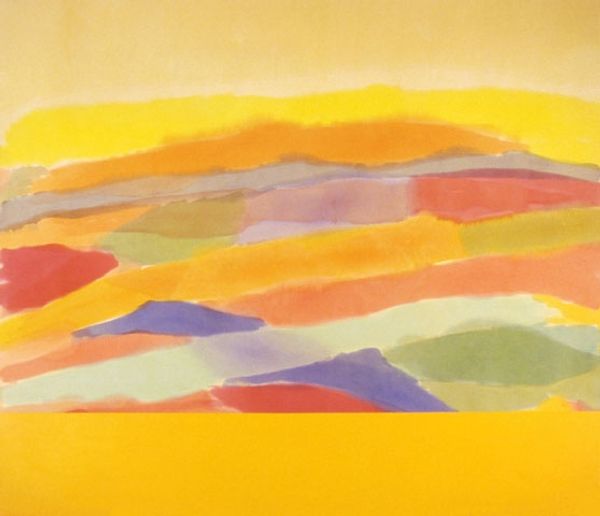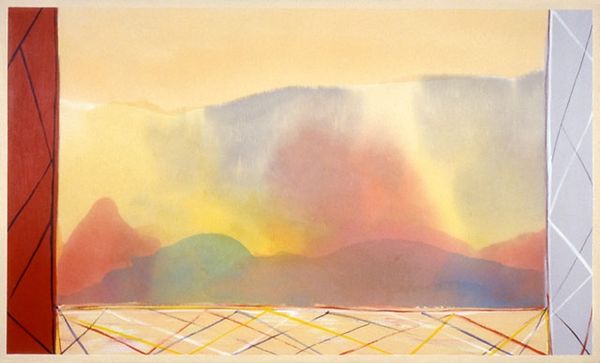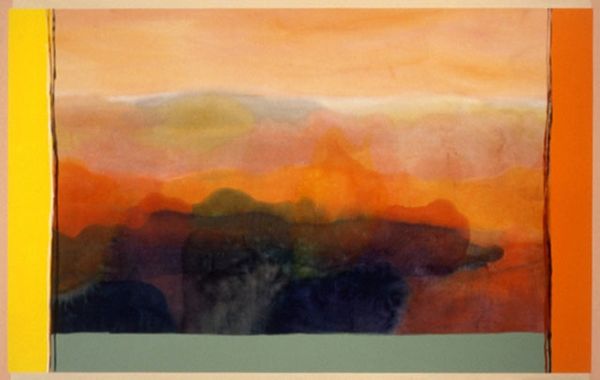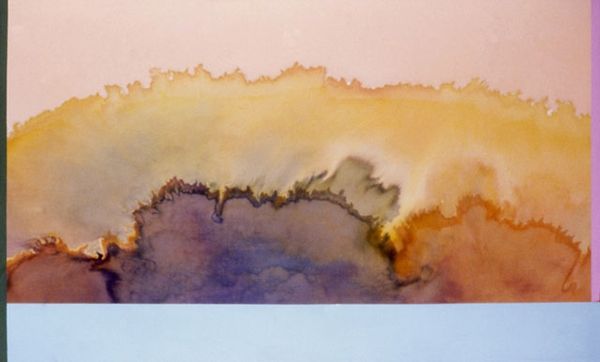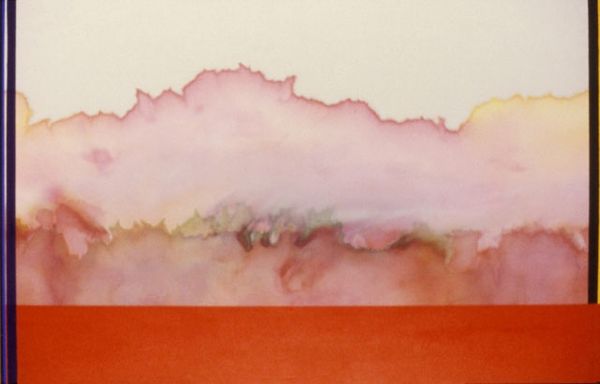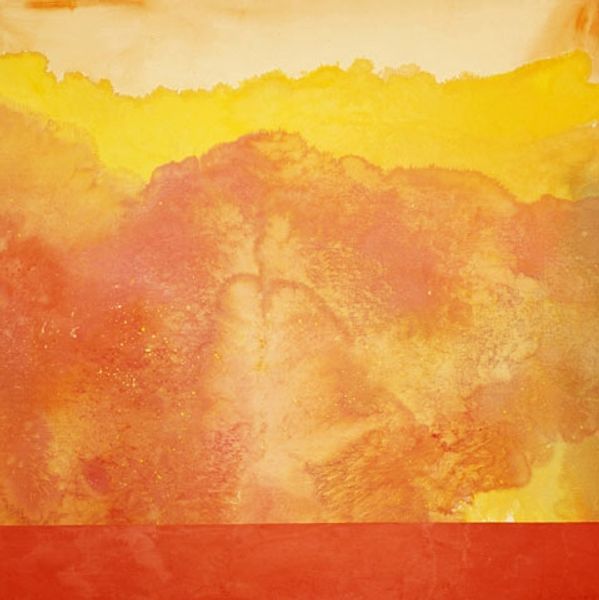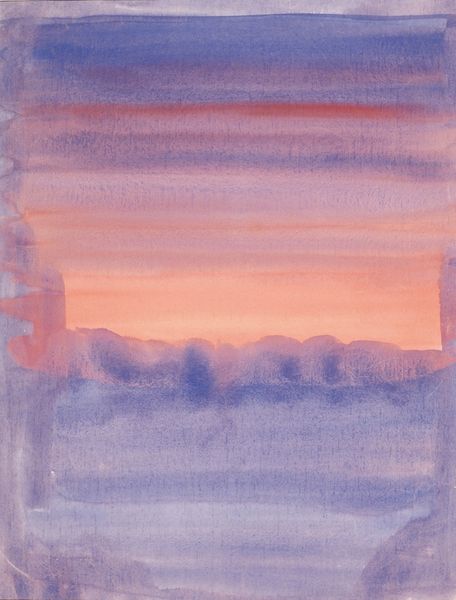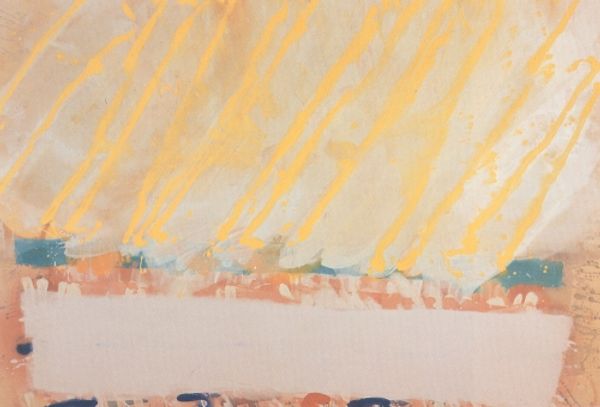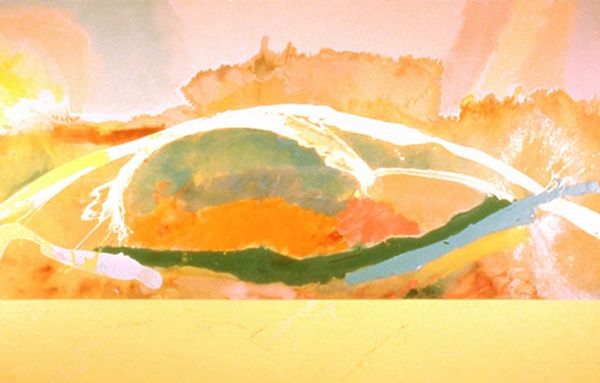
Copyright: Ronnie Landfield,Fair Use
Editor: Here we have Ronnie Landfield's "Golden Harvest," painted in 1981, using acrylic and watercolor. The shapes remind me a bit of rolling hills, but the colors feel almost dreamlike. How do you interpret this work, considering its place in art history? Curator: It's interesting you see hills, because Landfield’s work comes after a period where abstraction aimed to be completely non-referential. Considering its historical context, one might view this painting as a commentary on the commercialization of the abstract expressionist style. How does it subvert or conform to its legacy? Editor: Well, while the vibrant colors feel true to abstract expressionism, the distinct layers feel much more controlled, lacking the raw emotionality I often associate with that period. Does that speak to your point about commercialization? Curator: Exactly. There's a clear visual structure and intention in the layers, a refined process. Knowing it was made in 1981, one might ask if this aesthetic represents a reaction against the perceived excesses of the 1960s and 70s, moving towards something more palatable and marketable. It invites discussion on art’s public role and its relation to institutional power. Do you see that visual tension as something the public would pick up on? Editor: It’s not immediately obvious, but now that you point it out, the "golden" title adds another layer – hinting at a monetary value that wasn't as overtly acknowledged in earlier abstract works. I hadn’t considered that. Curator: The title certainly steers our reading. Overall, examining “Golden Harvest” reveals how even seemingly pure abstraction engages with the socio-political forces surrounding its creation and reception. Editor: It’s fascinating how looking at the historical backdrop changes how I perceive the painting's message. Thanks for shedding light on that.
Comments
No comments
Be the first to comment and join the conversation on the ultimate creative platform.
